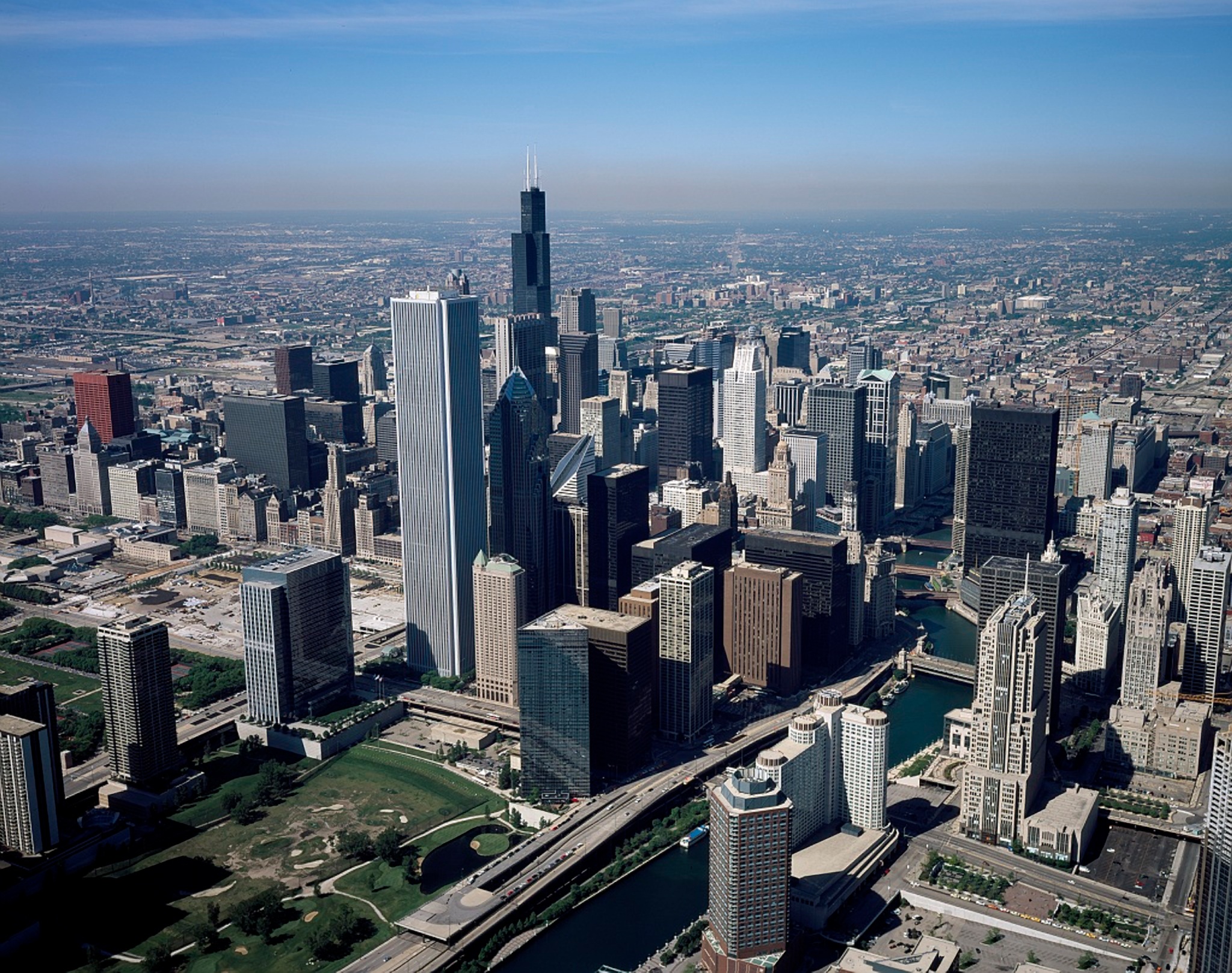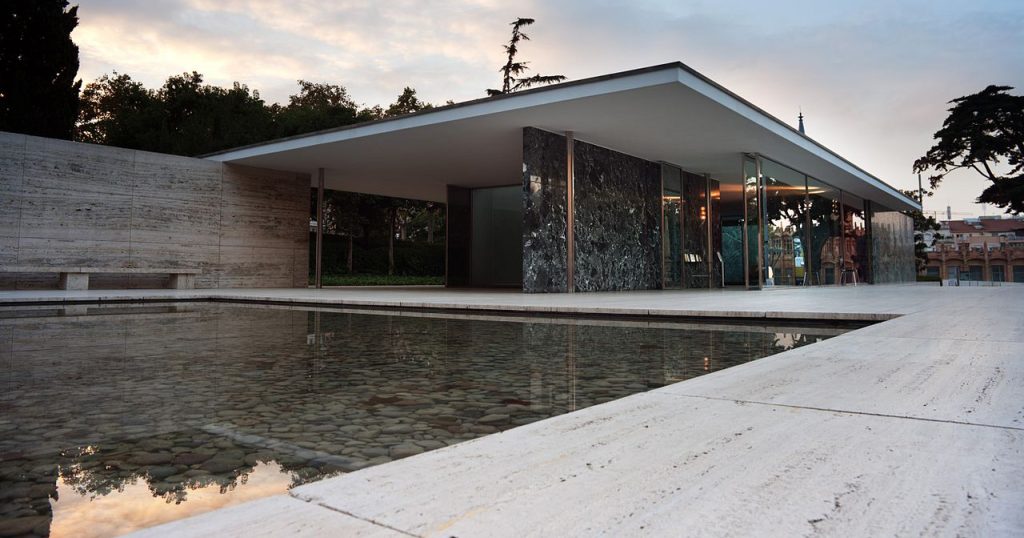Architizer’s 13th A+Awards features a suite of sustainability-focused categories recognizing designers that are building a greener industry — and a better future. Start your entry to receive global recognition for your work!
Modern architecture originated in the early twentieth century in Europe and later expanded worldwide, particularly in the United States, where many European architects emigrated. Modernism reacted against nineteenth-century historical architectural styles, such as Neoclassicism and Revivalism. More specifically, modernist architects wanted to break away from excessive ornamentation, favoring simpler, functional, and human-centered designs guided by the “form follows function” philosophy.
Characteristics of Modernism in Architecture
What is Modern architecture?
The driving force behind Modernism was to create a new architectural language, using new materials and technologies, an architecture that better reflected the changing society at the turn of the twentieth century, most notably marked by industrialization and technological innovation.
Modern architecture can be more accurately described as a movement rather than a style — one that encompassed various architectural expressions. Despite their differences, these architectural expressions shared a common goal: to break away from historicism while creating an architecture that had not been produced before and responded to contemporary realities.
What are the defining traits of Modern architecture?
Modern architecture highlights functionality, simplicity and the rejection of ornamentation. This approach is reflected in its simple forms and clean lines. Materials such as glass, steel and reinforced concrete reinforced this minimalist approach, offering innovative design solutions such as large glass expanses, open floor plans and structurally efficient constructions. These advantages enabled architects to experiment with structure and building envelopes, helping them to break away from traditional forms and construction techniques.
History of Modern Architecture
Why and how did Modern architecture transform people’s lifestyles?
The rapid growth of cities, driven by industrialization at the turn of the twentieth century, led to a high demand for new housing, office buildings and factories. Modern architecture addressed these challenges by embracing technological innovations and new materials. These advancements revolutionized construction techniques, enabling the creation of more functional, open and flexible spaces while leaving behind architectural traditions seen as impractical and inadequate to satisfy the needs of a changing society. Prefabrication and mass-production in construction enhanced efficiency, facilitating the construction of more economical structures in less time.
One of Modernism’s most significant contributions was the creation of the skyscraper. This type of construction was the epitome of progress and redefined urban development. Skyscrapers also transformed how people lived, worked and interacted in increasingly denser and more dynamic environments.
What movements emerged under the Modernist umbrella?
Examples and Case Studies of Architectural Modernism
Who are the dominant figures in Modern architecture, and what are some of their most notable works?
- Louis Henry Sullivan (1856-1924): Notable works: Wainwright Building (1890); Carson Pirie Scott Store (1899-1904); and the Home Building Association Bank (1914).
- Mies van der Rohe (1856-1924). Notable works: Barcelona Pavilion (1929); Villa Tugendhat (1930); Lake Shore Drive Apartments (1951); Farnsworth House (1951); and Seagram Building in collaboration with Philip Johnson (1958).
- Walter Gropius (1883-1969). Notable works: Dessau Bauhaus School (1925–1932); Gropius House (1937), Michael Reese Hospital (1945–1959); and John F. Kennedy Federal Office Building (1963–1966). Walter Gropius was also involved in furniture design but was not its primary focus.
- Le Corbusier (1887-1965). Notable works: Villa Savoye (1928); Cité Universitaire, Immeuble Clarté and Cité de Refuge (1928–1933); Ronchamp Chapel (1950-1954); Unité d’Habitation, Marseille (1947–1952), and Buildings in Chandigarh India (1952-1959). He also collaborated in the design of the United Nations Headquarters (1947-1952).
- Alvar Aalto (1898-1976). Notable works: Paimio Sanatorium (1928–1933); Baker House, Massachusetts Institute of Technology (1947–1948); Säynätsalo Town Hall (1949–1952); Louis Carré House (1956–1958); and Finlandia Hall (1962–1971).
- Eero Saarinen (1910-1961). Notable works: The Gateway Arch (1947); TWA Flight Center (1956-1962 ); Dulles International Airport (1958-1962); General Motors Technical Center (1949-1956); Irwin Conference Center (1954); Milwaukee War Memorial (1952-1957).
- Philip Johnson (1906-2005). Notable works: Glass House (1949) and Seagram Building in collaboration with Mies Van Der Rohe (1958). Philip Johnson was later associated with the Post-modern movement, designing notable buildings such as the 550 Madison Avenue (former AT&T Building) in Manhattan (1984) and the Lipstick Building (1984).
- Oscar Niemeyer (1907-2012 ). Notable works: Brasília Cathedral (1958-1970); Pampulha Modern Ensemble (1943); Copan Building (1957); and the Museum of Contemporary Art in Niterói, Brazil (1996). He also collaborated with Le Corbusier in the design of the United Nations Headquarters (1947-1952).
What is the relationship between Modern architecture and mid-century modernism?
Mies Van Der Rohe, Walter Gropius, Le Corbusier, Alvar Aalto and Eero Saarinen also designed furniture, some of which have become iconic and remain in production. Philip Johnson was also involved in furniture design, but this was never a focus. His furniture designs were customized for specific building projects. Oscar Niemeyer also designed furniture, but never as prominently as his architectural work. Finally, Louis Sullivan’s furniture designs were limited to some pieces produced for specific projects, aligning with his overall architectural vision.
United Nations Headquarters designed by a multinational team of leading architects, including Le Corbusier and Oscar Niemeyer (1947-1952). Midtown Manhattan, New York, US. | Ad Meskens, United Nations Chrysler and Empire State Building, CC BY-SA 3.0
Is contemporary architecture an extension of Modernism?
Contemporary can be understood as an evolution of Modernism, as it often builds upon the same principles of simplicity, functionality, and human-centered ideals. The “form follows function” ethos, a hallmark of Modernism, continues to influence contemporary architects. Like their Modernist predecessors from the early twentieth century, contemporary architects embrace technological innovations and new materials.
While Modernist architects experimented with prefabrication and mass production as products of industrialization, contemporary architects implement sustainable strategies, parametric design, and AI technology in their projects. These innovations have led to a more diverse architectural language.
Criticisms and Challenges of Modern Architecture

Aerial view of Chicago’s skyline. | Photo via PxHere.
Why do the universal principles of Modernism clash with local cultural and environmental contexts?
Modernism’s universal principles, particularly emphasized in the International Style, prioritized standardization. While this approach enhanced innovation and efficiency, it often led to designs that could be implemented in any location. Consequently, it has faced criticism for disconnecting cities from their historical identities, leading to an architecture that sometimes feels impersonal and fails to address the cultural, social, economic, and environmental needs of specific places. This disconnect typically eliminates the sense of place and belonging.
Additionally, relying on technical innovations has often led Modernist architects to overlook climate considerations. An extensive use of glass, one of Modernism’s hallmarks, exemplifies designs that fail to adapt to local climates. In extreme climates, for instance, these projects can prove inadequate, leading to high energy consumption for cooling or heating.
As a result, Modernism’s universal approach can be seen as an unsuccessful attempt to balance innovation and the varying needs of different contexts.
How has architecture evolved beyond Modernism to address contemporary needs and challenges?
While Modernism laid the groundwork for architectural innovation, and its vision of simplicity and functionality still inspires contemporary architects. However, its universal approach has since been adapted to modern needs, resulting in structures that balance innovation and sensitivity to their context. Architecture has evolved beyond the core principles of Modernism, emphasizing cultural and environmental responsiveness. It integrates local materials, vernacular traditions, and sustainable design principles. Challenges like climate change and sustainable development have become part of today’s architectural discourse, reflecting a commitment to responding effectively to contemporary needs and challenges.
Architizer’s 13th A+Awards features a suite of sustainability-focused categories recognizing designers that are building a greener industry — and a better future. Start your entry to receive global recognition for your work!
Top image: By Ashley Pomeroy at English Wikipedia, CC BY 3.0, Link

